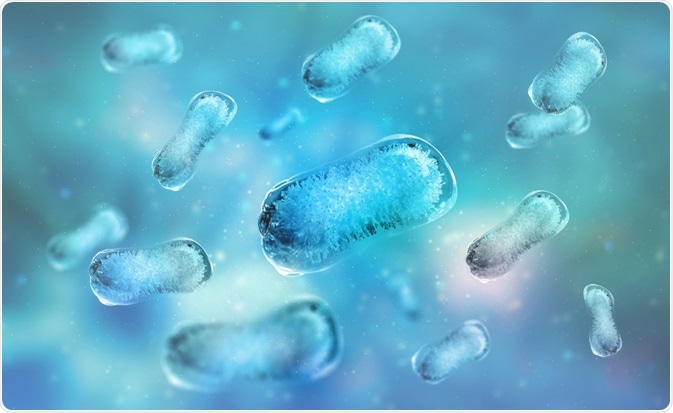Phylogenies show how organisms are related to each other by placing them in an ordered map of them and their relatives. These can be done on a large scale, such as the tree of life, or on a smaller scale, such as showing all the species of Mycobacterium bacteria. When done on microorganisms, phylogenies can provide valuable insight into how diseases evolve, spread, and adapt to their hosts.
 Image Credit: Yurchanka Siarhei / Shutterstock.com
Image Credit: Yurchanka Siarhei / Shutterstock.com
How phylogenies are made and analyzed
When constructing phylogenies, the similarities of species’ characteristics are scored to give an indication of relatedness. For pathogenic microorganisms, this is typically done by sequencing the genome or other genetic information.
For pathogenic bacteria sequences of genes, 16S rRNA, or entire genomes are popular choices of organizational structure. However, the resulting phylogenetic trees can differ depending on what source information is used and what method of tree building is used, and as such phylogenetic trees are constantly being improved and debated.
The first steps usually involve aligning the sequences of the various species, helping to identify sequences that are conserved or have remained the same, and sequences that have changed. Because microorganisms such as bacteria can undergo horizontal gene transfer, genes that are universally conserved across all bacteria are used as markers to ensure accuracy in the alignment.
The similarities and differences in the genes or genomes are then used to infer how closely related species are based on whether regions have changed, as well as how likely specific regions are to change. For example, critical genes used for specific cell functions are less likely to change than unused sections of the genome, and therefore any changes in critical genes between two species are likely to indicate more distant relatedness.
For pathogenic microorganisms, several specific traits are of interest when it comes to constructing phylogenies. Genomic islands are areas of the genome that have been acquired through horizontal gene transfer, and as such, contain genes that are advantageous for bacteria. Phylogenies can show how strains of bacteria acquire these traits that can turn a microorganism into a pathogenic microorganism.
Phylogenies are also important for other forms of evolutionary inference, as it affects how much a species can evolve. When analyzing the traits of several species within a family, the species are not seen as independent data points due to their evolutionary relatedness, which means precautions need to be taken, and the phylogenic information needs to be included.
Applications of phylogenies on microorganisms
In the event of a serious outbreak, phylogenies are often done of the pathogenic organism to determine the source. Such studies are often aimed at understanding and minimizing the spread of diseases.
For example, phylogenetic studies on Enterobacteriaceae pathogens have found how antibiotic-resistant genes spread through the family, and that the origin of virulent genomic islands was in phytopathogenic bacteria, meaning pathogens that target plants. Therefore, the spread of antibiotic resistance through pathogenic families can spread regardless of whether the target host is an animal or plant.
The use of phylogenies for understanding pathogenic microorganisms can have distinct advantages over other methods. For example, the relationship between Mycobacterium species tends to show pathogenic species sharing a close relationship with each other and non-pathogenic species clustering together distinctly from the pathogenic species.
This, in turn, also revealed that many genes present in the non-pathogenic species had been lost from the pathogenic species, presumably influencing their evolution.
Similarly, Leptospira has one branch of pathogenic and one of the non-infectious species, in addition to a third, intermediately pathogenic branch.
Detailed studies of Leptospira proteins and genes that influence pathogenicity make more sense when placed in a phylogenetic context, such as one study showing how genes gained and lost by pathogenic and intermediately pathogenic species since their split from non-infectious species provide increased understanding of how bacterial pathogens change and adapt in response to their hosts.
Sources
- Piña-Iturbe A., et al. (2018). Comparative and phylogenetic analysis of a novel family of Enterobacteriaceae – associated genomic islands that share a conserved excision/integration module. Scientific Reports. https://doi.org/10.1038/s41598-018-28537-0
- Prasanna A.N. and Mehra, S. (2013). Comparative phylogenomics of pathogenic and non-pathogenic Mycobacterium. PLoS ONE. https://doi.org/10.1371/journal.pone.0071248
- Fouts, D.E., et al. (2016). What makes a bacterial species pathogenic?: Comparative genomic analysis of the genus Leptospira. PLoS Neglected Tropical Diseases. https://doi.org/10.1371/journal.pntd.0004403
Further Reading
- All Pathogen Content
Last Updated: Nov 25, 2019

Written by
Sara Ryding
Sara is a passionate life sciences writer who specializes in zoology and ornithology. She is currently completing a Ph.D. at Deakin University in Australia which focuses on how the beaks of birds change with global warming.
Source: Read Full Article


